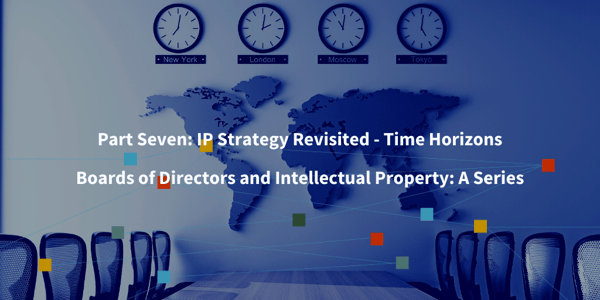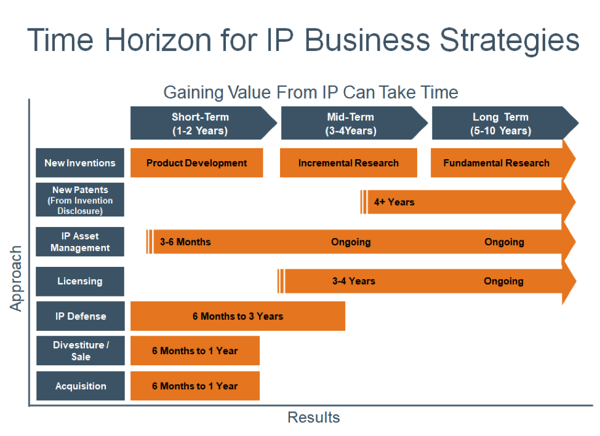
We have discussed the importance of intellectual property and the questions that Boards of Directors should ask about their company’s IP. These questions are really an “as is” assessment. What are we spending on R&D—actual and relative to competitors? Are we harvesting the output of R&D and turning it into intellectual property to benefit the stakeholders of the company? These questions are just the beginning.
Once the Board has understood where the company is, it needs to consider where it should be going. Without a solid understanding of the various time requirements for IP strategies, Boards can enter discussions with unrealistic expectations that can harm a company’s present and future.
We’ve previously discussed the amount of time a new patent can take, from application to the day the patent is granted. The truth is that many Board members may not even understand this, the most well-known of time horizons in an IP strategy. Other aspects of intellectual property strategy can take more time than Boards of Directors might expect.
There are many dimensions to intellectual property strategy including “time”:

The Basics:
The “blocking and tackling” of R&D, product development, patenting and IP asset management is illustrated at the top of the chart. At its best, this is an ongoing, consistent, and thoughtful process with a mid- to long-term time horizon.
Licensing:
Out-Licensing (licensing your technology to others) can take a surprising amount of time to get going as you assess what you have and what you need and build a case for others to license. That is what is depicted in the chart above. In-Licensing of individual patents or a portfolio can happen much faster.
IP Defense:
This category represents patent litigation as you defend your territory from infringers or competitors. The timeframe shown represents an average range of time for litigation.
Acquisition/Divestiture:
This category represents the outright sale or purchase of a patent or portfolio. It can be sale or purchase of the assets directly or the acquisition of a company or the spinoff/sale of a business unit.
Understanding the time required for various IP strategies can help you make more informed decisions for your company’s long-term success. There are many aspects to each of these strategies. In the next part, we will focus on the Make/Buy question.


